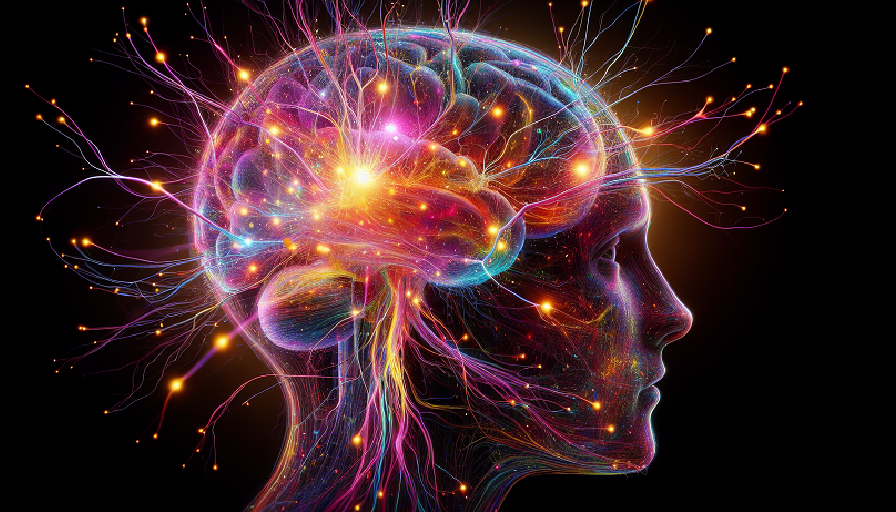
From lighting a candle on a birthday cake to tying your running shoes before a race, rituals are everywhere. Some are ancient, others personal. But they all serve a deeper purpose—especially when life is in flux. Whether it’s a new job, a breakup, a move, or a pandemic, change throws your brain into uncertainty. That’s when rituals step in—not as superstition, but as a neural stabilizer.
They don’t just bring emotional comfort. Rituals calm the brain, restore a sense of control, and prime the nervous system for resilience. From a neuroscientific standpoint, rituals help your brain adapt to change without spiraling into chaos. They’re the psychological equivalent of putting on your seatbelt before the turbulence hits.
Contents
Why Change Feels So Mentally Disruptive
Your brain is wired for predictability. It builds models of your world—how mornings unfold, what faces to expect at work, where your keys usually are. This mental framework saves energy and creates a sense of safety.
When something shifts—routine, identity, environment—those models break. The brain scrambles to rebuild them, triggering a stress response. The amygdala (your fear center) lights up. The prefrontal cortex (which helps you plan and regulate emotions) gets overwhelmed. Cortisol rises. Focus drops. And suddenly, brushing your teeth feels like a heroic act.
Enter: ritual.
Change = Cognitive Load
- New situations increase decision-making demands
- Loss of routine undermines emotional regulation
- Ambiguity increases anxiety and mental fatigue
Rituals reduce this load. They offer structure when structure disappears—and that has real neurological benefits.
The Neuroscience of Ritual
At its core, a ritual is a repeatable, meaningful sequence of actions. This could be spiritual (prayer, meditation), cultural (weddings, funerals), or personal (your morning coffee routine). What matters isn’t what the ritual is—it’s what it does in the brain.
When you perform a ritual, several things happen:
- The brain shifts into focused mode: The motor cortex and cerebellum engage through repetition, calming cognitive noise
- The limbic system settles: Familiar sequences reduce amygdala activation, lowering anxiety
- Dopamine is released: Anticipation and successful completion of a ritual reward the brain, reinforcing a sense of control
- Social bonding circuits activate: Shared rituals (even virtual ones) trigger oxytocin, reinforcing connection
It’s no surprise that athletes, soldiers, and performers often turn to rituals before high-stress moments. They’re not just warming up their bodies—they’re priming their brains to perform under pressure.
Control in Chaos: How Rituals Restore Agency
One of the most unsettling things about change is that it often feels done to us. Rituals flip that script. Even small, self-initiated actions—lighting a candle, journaling, or setting an intention—signal to the brain: I have some control.
This is called perceived control, and it has a powerful impact on mental health. Research shows that people with a higher sense of control over their environment tend to experience lower levels of stress, depression, and cognitive fatigue—even when the actual conditions are unchanged.
Rituals and the Brain’s Need for Closure
- Transitions: Rituals help mark beginnings and endings—critical for mental processing
- Loss: Rituals provide a container for grief, helping the brain contextualize absence
- Uncertainty: Rituals create a reliable “anchor” when the future is unclear
When a ritual is performed, the brain interprets it as structure. That structure creates a scaffold for meaning. And meaning is what keeps the brain from floundering in chaos.
Everyday Rituals That Rewire the Brain
You don’t need incense or ancient chants to benefit from ritual. Even seemingly mundane routines can become neurologically powerful if done with intention. The key is consistency and personal meaning.
Examples of Everyday Rituals That Calm the Brain
- Morning check-ins: Journaling or meditating at the same time each day helps regulate mood and set cognitive tone
- Transition routines: Having a ritual to end the workday (like changing clothes or going for a walk) cues your brain to shift gears
- Bedtime rituals: Dim lights, stretch, read—this sequence signals to your body it’s safe to sleep
- Movement rituals: Daily walks or yoga, done with awareness, help discharge stress and recalibrate attention
Done regularly, these rituals don’t just soothe the moment—they create long-term neural pathways that reinforce resilience and adaptability.
Brain Supplements and Ritual Synergy
When rituals become part of a brain-supporting lifestyle, nootropics can help reinforce their effects. Certain supplements enhance the very systems rituals influence—like stress regulation, focus, and mood balance. Together, they create a synergistic feedback loop.
Nootropic Ingredients That Support Ritual Benefits
- L-Theanine: Promotes calm focus, ideal for mindfulness and pre-sleep rituals
- Ashwagandha: An adaptogen that may lower cortisol, reducing stress during transitions
- Rhodiola Rosea: Supports energy and mood stability during times of upheaval
- Magnesium L-Threonate: May support cognitive clarity and better sleep quality—critical during change
Incorporating these with consistent rituals can help your brain stay steady—even when life isn’t.
How to Create a Brain-Smart Ritual
Building an effective ritual isn’t about superstition. It’s about giving your brain something solid to rely on. Here’s how to make yours work:
- Pick a time: Anchor the ritual to a part of your day (morning, post-lunch, bedtime)
- Make it repeatable: Choose actions you can do consistently (simple is better than perfect)
- Add sensory cues: Scent, sound, and light all reinforce neural associations
- Infuse meaning: Tie the ritual to a personal goal, value, or intention
It can be as simple as sipping tea slowly while reflecting on your day. Or more elaborate—like a Sunday reset involving journaling, planning, and meditation. What matters most is that your brain can depend on it.
In Times of Change, Ritual Is Rebellion
When life becomes unpredictable, choosing to engage in a steady, intentional act is a small rebellion. It says: I may not control what happens, but I control how I respond. Rituals give the brain a script when the rest of the scene has gone off-book. They provide order, meaning, and comfort—not as escape, but as foundation.
So the next time your world shifts, reach for your ritual. Light the candle. Tie the shoes. Breathe in, breathe out. Because when the dust settles, your brain will remember the rhythm—and thank you for it.

